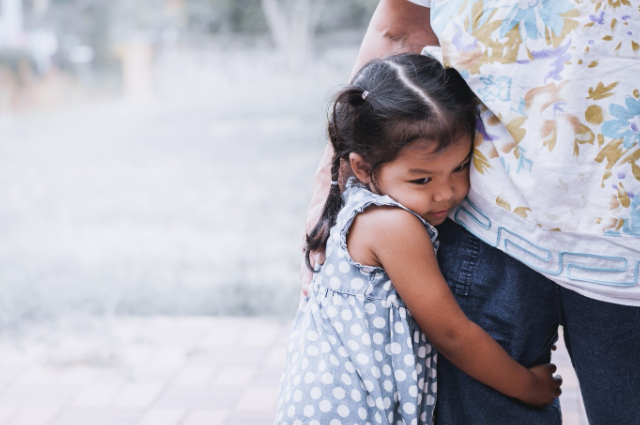
Introduction
In today's world, the prevalence of anxiety among children is a growing concern. As parents and caregivers, it is crucial for us to equip the younger generation with the necessary coping skills to navigate life's inevitable challenges. Anxiety can manifest in various ways, from common fears like public speaking to irrational phobias, such as the fear of riding an elevator. The good news is that anxiety can be managed and even overcome with the right approach. It's not merely about shielding them from fear but guiding them through it to emerge stronger and more capable.
Anxiety is a common experience for people of all ages, but it can be particularly challenging for children who may lack the tools and experience to cope with their fears. As parents and caregivers, it is our responsibility to create a supportive and nurturing environment that allows children to confront their anxieties in a healthy and constructive way.
In this article, we will explore the concept of nurturing resilience in children as a means to overcome anxiety. We will discuss the importance of emotional connection, breaking tasks down into manageable steps, practicing anxiety-management skills, and providing ample attention and support. Real-life examples will illustrate how these principles can be effectively applied. Additionally, we will delve into other essential factors, such as open communication, positive reinforcement, mindfulness techniques, seeking professional guidance, consistency, and encouraging a healthy lifestyle.
The Greenhouse Analogy

Imagine a greenhouse, a meticulously curated haven designed to foster the delicate growth of plants. Now, envision this analogy as a perfect parallel to the experience of children grappling with anxiety. In this analogy, parents and caregivers act as the guardians of the greenhouse, responsible for meticulously crafting a secure environment where children can bravely confront their fears. Much like the protective cover of a greenhouse shields plants from the harsh impact of extreme temperatures, the emotional and physical environment we create shields children from the tumultuous effects of anxiety. The foundation of this greenhouse is the cultivation of the right mindset, a mindset that acknowledges the normalcy of anxiety while emphasizing the paramount importance of the actions children choose to take in response. It's about instilling in them the understanding that, much like a gardener tending to plants, they have agency and control over their responses to anxiety. This analogy serves as a powerful narrative, illustrating the role of caregivers in nurturing emotional resilience, teaching coping mechanisms, and empowering children to not just weather the storms of anxiety but to thrive and grow stronger through the process. Through this metaphorical greenhouse, caregivers guide children toward a path of self-discovery, resilience, and the mastery of their emotional responses.
The Four Main Steps to Coach Kids Through Anxiety
- Connect with Them Emotionally: The first and most critical step is to connect with your child on an emotional level. Validating their feelings without judgment or attempting to change how they feel is essential. Show them that you understand and empathize with their anxiety. Let them know that it's normal to feel scared at times.
- Break Tasks Down into Baby Steps: To help your child confront their anxieties, you need to break tasks into manageable steps. The goal is to structure tasks in a way that allows your child to spend more time in the "Learning Zone," that sweet spot between their comfort zone and feeling overwhelmed. The best accommodations are those that help your child accomplish the task, not avoid it.
- Practice the Skills: Anxiety is a skill that can be learned, and practice is key. Start with tiny exposures, and don't move on to the next step until your child has mastered the previous one. Gradually increase the difficulty of the tasks as your child becomes more comfortable. It's important to remember that feeling nervous when facing something new is entirely normal and an essential part of the learning process.
- Give Plenty of Attention: Children thrive on attention, and when they face their fears, they deserve to be recognized for their courage. Praise them for their bravery and their ability to confront their anxieties. Show them that facing their fears is a trait to be celebrated and prioritized, not something to avoid.
Let's delve into some real-life examples to understand how these principles can be effectively applied.
Example 1: Overcoming the Fear of Elevators
Imagine a scenario where a young child develops a crippling fear of elevators after a traumatic incident. Their parent takes a proactive approach to help them overcome this fear. First, they start by talking to the child about elevators, validating their fears, but also emphasizing the positive aspects of elevators, such as their convenience and necessity. They introduce imaginative play, using toy characters, to familiarize the child with elevators in a safe and controlled environment.

Credit - Anirudha Gedam - by Adobe Photoshop 24.7
Practical exposure comes next. The parent prepares the child by discussing what to expect when riding an elevator, letting them know that they can push the button and that the parent will hold their hand throughout the experience. Initially, they practice with the parent carrying the child for maximum support. As the child becomes more comfortable, the level of support gradually decreases. Eventually, they ride the elevator without holding hands. The child's accomplishment is celebrated, and they are praised for their courage. Over time, the fear of elevators is conquered, and the child regains their confidence.
Example 2: Overcoming the Fear of Public Speaking in School
In another scenario, a third-grader experiences intense anxiety when asked to speak in front of the class. His parents notice that he often complains of stomach-aches, which are likely a physical manifestation of his anxiety. Instead of requesting accommodations to avoid public speaking, the parents decide to help him develop the skills to face his fear.

First, they empathize with his anxiety and let him know that it's okay to feel nervous about public speaking. They then proceed to break down the task into manageable steps. They encourage him to watch videos of other children confidently presenting in class, and they discuss what they observe. The child is gradually exposed to the idea of speaking in front of an audience.
Practical exposure begins with rehearsing presentations at home in front of parents. The parents provide emotional support and guidance throughout the process. As the child's confidence grows, they introduce him to practicing in his actual classroom, initially with the teacher and possibly a supportive peer present. The child starts by answering a question he already knows the answer to, building a positive association with speaking in front of the class. Support decreases over time until he can confidently present in class independently.
In both examples, the child's fears were met with empathy and understanding. Anxiety was addressed not as an obstacle to be avoided but as an opportunity for growth and learning. The greenhouse of emotional safety provided by the parents allowed these children to build resilience and face their anxieties head-on. As they continued to confront their fears, they grew stronger, more confident, and less anxious.
Additional Insights on Nurturing Resilience
Building resilience in children is a multifaceted endeavour. In addition to the core principles discussed, several other factors contribute to helping children overcome anxiety and become more resilient.
- Open Communication: Encourage open and honest communication with your child. Create a safe space where they feel comfortable sharing their fears and concerns. Be a good listener and validate their emotions.
- Positive Reinforcement: As children make progress in overcoming their anxieties, it's essential to provide positive reinforcement. Celebrate their achievements, no matter how small, to boost their confidence and motivation.
- Mindfulness and Relaxation Techniques: Teaching children mindfulness and relaxation techniques can be invaluable. Breathing exercises, meditation, and yoga can help them manage their anxiety and stress.
- Seek Professional Guidance: In some cases, anxiety in children may require professional intervention. A child psychologist or counsellor can provide specialized guidance and support tailored to your child's needs.
- Consistency: Consistency in your approach to helping children overcome anxiety is key. Repetition and gradual exposure are essential components of building resilience.
- Encourage Healthy Lifestyle Choices: A balanced diet, regular physical activity, and adequate sleep can significantly impact a child's emotional well-being and resilience.
- Lead by Example: Children often learn by observing the behaviour of adults. As a parent or caregiver, demonstrating resilience in the face of your own challenges can set a powerful example for your child.
Conclusion
Helping children build resilience by coaching them through anxiety is a powerful way to prepare them for the challenges of life. The greenhouse analogy illustrates the importance of creating an emotionally safe environment where children can learn to face their fears with courage. The four main steps - connecting with them emotionally, breaking tasks into baby steps, practicing anxiety-management skills, and providing plenty of attention and support - are essential elements of this approach.
Real-life examples demonstrate how these principles can be applied effectively, from overcoming the fear of elevators to conquering the anxiety of public speaking in school. In each case, the child's anxiety was met with understanding and support, allowing them to grow and become more resilient.
As parents and caregivers, it is our responsibility to nurture this resilience in our children. By coaching them through anxiety, we not only help them overcome their fears but also equip them with valuable coping skills that will serve them well throughout their lives. Anxiety need not be a hindrance; it can be a stepping stone to growth, strength, and confidence.
In the end, it's not just about shielding our children from fear but about guiding them through it to emerge stronger and more capable. With the right approach, we can empower our children to face their anxieties and thrive in a world that presents challenges at every turn. As we continue to explore the vast landscape of child development and mental health, it is clear that nurturing resilience is an invaluable gift we can offer to the next generation.
. . .
References:
- Book: Anxious Kids by Michael Grose
- What to do when you worry too much: A kids guide to overcoming anxiety by Joy MacKenzie
- Helping Your Anxious Teen: Positive Parenting Strategies to Help Your Teen Beat Anxiety, Stress, and Worry by Sheila Achar Josephs PhD
- www.who.int/activities
